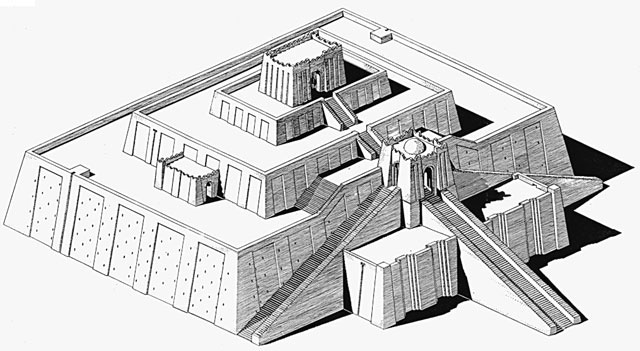The Ziggurat of Ur Today
The ancient people of Ur named the ziggurat "Etemennigur" which roughly means "House whose foundation creates terror," There is no doubt that this temple has such a foundation. If you study the picture you can see small window-like hole perforating the base, they are termed "weeping holes" that provide the ziggurat with a means to drain rain and flood water, ensuring a temple that could stand the test of time. More impressive is that the whole thing is constructed of mud-bricks as there was not much stone to be found in the fertile crescent. Compared to Egypt's pyramids of limestone
it's impressive that such a structure could survive as long made of clay. This drew the attention of a king 2,500 years later.
The highest tier, now destroyed, was home to the sacred temple
Near the end of the Neo-Babylonian empire in 6th century AD, a restoration of the ziggurat went underway helmed by King Nabonidus. With the base left, the empire tried to rebuild the upper tiers to restore it to its former glory, however, as there was no blueprint or any surviving information of it's architecture surviving, they had little to work with. They eventually made the Ziggurat of Ur seven tiered instead of what archeologists believe was only three tiered. These tiers were also destroyed by time leaving it's seemingly indestructible foundation behind.
A sketch of what the ziggurat might have looked like. Drawn in 1930 by Leonard Woolley.
By Jonathan R.



No comments:
Post a Comment